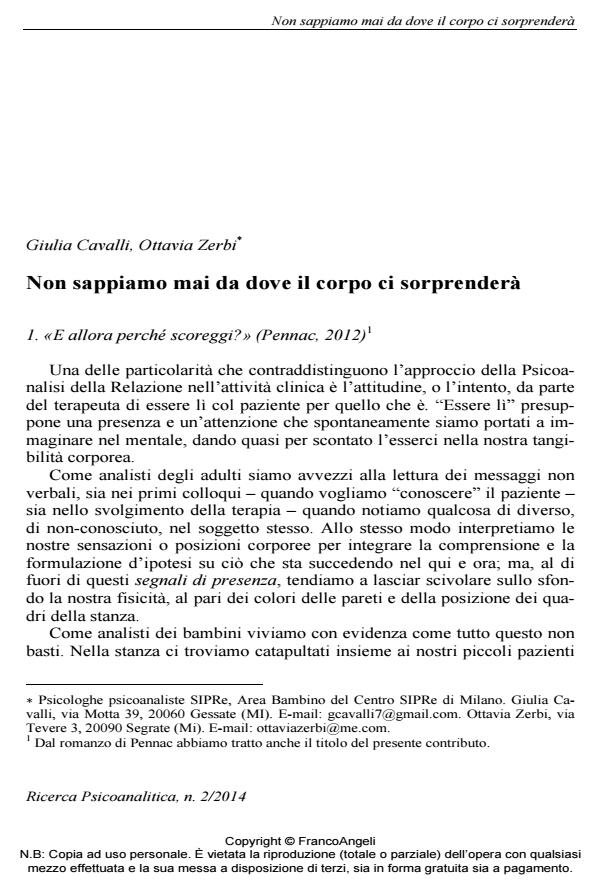We never know where the body will surprise us
Journal title RICERCA PSICOANALITICA
Author/s Giulia Cavalli, Ottavia Zerbi
Publishing Year 2014 Issue 2014/2
Language Italian Pages 18 P. 29-46 File size 658 KB
DOI 10.3280/RPR2014-002003
DOI is like a bar code for intellectual property: to have more infomation
click here
Below, you can see the article first page
If you want to buy this article in PDF format, you can do it, following the instructions to buy download credits

FrancoAngeli is member of Publishers International Linking Association, Inc (PILA), a not-for-profit association which run the CrossRef service enabling links to and from online scholarly content.
Starting from their work experience with children that inevitably leads the analyst to be with the material presence of the patient’s and the analyst’s body, the Authors discuss the theoretical-clinical framework in which to insert this dimension starting from the critique of the idea of the body as subject or object of therapy, and of therapy seen as mentalization of the body, suggesting that it is necessary to consider the process of the body-mind-context. This entails implications not only for the way we work in the analytical room, but even more for the training of clinicians that need to be deeply "present to themselves".
Keywords: Body, infant research, self-echo-organization, body-mind-context, presence to oneself
Giulia Cavalli, Ottavia Zerbi, Non sappiamo mai da dove il corpo ci sorprenderà in "RICERCA PSICOANALITICA" 2/2014, pp 29-46, DOI: 10.3280/RPR2014-002003